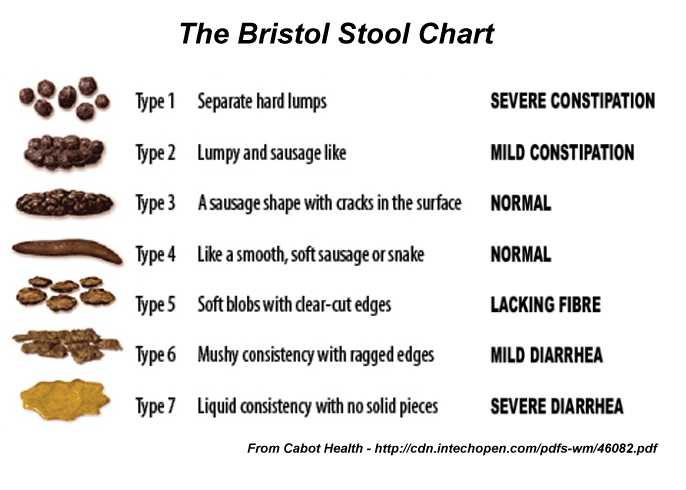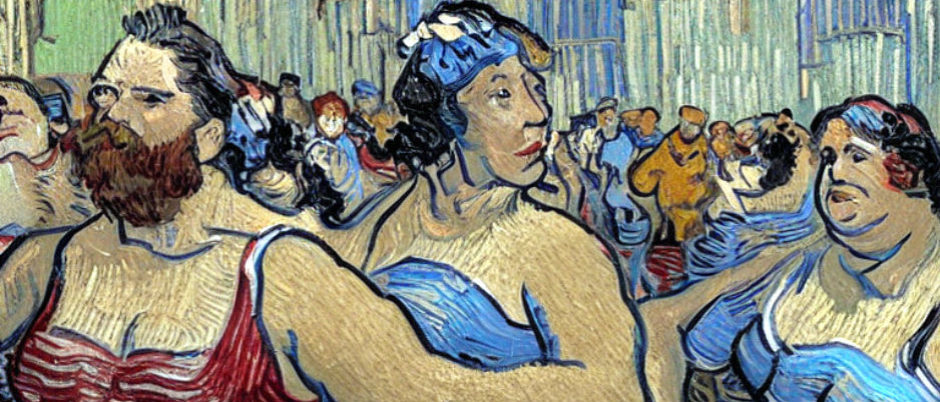You Can Be A Doctor, Too
The Bristol Stool Chart, a seemingly bizarre and humorous tool, is actually a valuable resource for understanding and monitoring one’s digestive health. While it may make some boorish people laugh out loud due to its unusual classification of stool types, there is nothing funny about it. The chart serves a vital purpose in helping individuals assess their gastrointestinal well-being. In this article, we will delve into the world of the Bristol Stool Chart, explain its classification, and explore why it manages to be both informative and amusing.
Instead of telling your doctor “my shit looks funny,” you can wow them with your medical knowledge. Just inform them that “my feces calculate as a Type 7 on the Bristol Stool Chart.” If you’re a man, this is a good way to avoid your annual prostate check.
The Bristol Stool Chart: A Closer Look
The Bristol Stool Chart, also known as the Bristol Stool Scale, was developed by Dr. Ken Heaton and Dr. Stephen Lewis at the University of Bristol in the United Kingdom in 1997. Its purpose is to provide a standardized way for individuals to categorize their stool and maintain their digestive health based on the appearance and consistency of their shit. The chart aids in identifying potential digestive issues and helps healthcare professionals diagnose and treat gastrointestinal disorders. The chart can help prevent numerous disaster situations when the user realizes they have the unfortunate potential of delivering several Number 7 sloshers each day.
The Seven Levels of Poop
The Bristol Stool Chart divides stools into seven distinct categories, each represented by a different shape and consistency:

Why Immature People Think The Chart is Funny
Despite its clinical purpose, the Bristol Stool Chart has managed to tickle the funny bone of many. The humor primarily stems from the candid way it describes something many fancy-pants people consider taboo. Here are a few reasons why people think the chart is funny:
Bluntness: The descriptions are straightforward and lack any euphemisms. This directness is unexpected, and can be amusing to some.
The "Poo Emoji" Connection: In the age of emojis, people often notice a striking resemblance between the Bristol Stool Chart and the popular "poo emoji," which adds a comical aspect to it. Many people in this topsy-turdy world craft all of their jokes and pranks around the Poo Emojii.
Universality: Everybody poops, but few people openly discuss it. The chart's ability to turn an everyday bodily function into a scientific classification adds an additional element of humor to something everyone - from the primitive tribes of New Guinea to the Queen of England - thinks is hilarious.
The "Gross-Out" Factor: Some find humor in the fact that discussing feces is considered impolite in some cultures, particularly along 5th Avenue. This makes it a hilarious taboo to break when you are in the presence of anyone who effects haughtiness.Classifying Your Own Poops with the Chart
Now that we’ve explored the lighter side of the Bristol Stool Chart, let’s discuss how you can use the chart to assess your own digestive health:
Pay Attention: When you use the crapper, take a moment to examine your leavings. Consider its shape and consistency. It's best to take a picture of every excretion, and keep a diary. Hint: If you keep a photo diary, you should probably encrypt it so that it remains totally private.
Consult the Chart: Match the characteristics of your dung to one of the seven types on the Bristol Stool Chart. To make this easier, print out a large color version of the Bristol Stool Chart, laminate it in plastic for protection, roll it up and secure it with a rubber band, and carry it into the bathroom each time you visit.
Identify Potential Issues: Depending on the type of manure you identify, you can gauge the state of your digestive health. For example, if you manage to somehow deliver a Number One that actually looks like a Bristol 1, you have a serious problem you should address immediately. Unfortunately, you may be a carrier of Hare-Balle Syndrome (the presence of rabbit genes in your DNA).
Likewise, if you classify your excrement as Bristol 7, you should best avoid air transportation, large funerals at lonely out-of-the-way cemeteries, and especially space travel.
Monitor Changes: Regularly classifying your number two can help you spot any ongoing issues or sudden changes, prompting you to seek medical advice if necessary. A photo diary will help greatly, and will let your doctor know that you are not the typical ordinary know-nothing patient.Known Deficiencies With The Bristol Stool Chart
Even though the Bristol Stool Chart is a useful tool, the developers could have made it even more practical by incorporating the variables of perceived flatulence odor and the degree of butt flappage into their calculations. A simple cross-reference method could be employed. For example, a reported ‘Bristol Type 1’ that is flatulence-classified as “Silent-But-Deadly,” but with an extremely high Flappage index of 9, indicates it is probably time to call 911.
Conclusion
The Bristol Stool Chart, with its amusing yet pseudo-scientific approach, provides a unique way to assess and monitor your digestive health. While it may seem funny to low proles at first glance, it serves an essential purpose in promoting awareness about gastrointestinal well-being. Remember that while some humor can be found in discussing bodily functions, it’s crucial to take your health seriously and seek medical attention if you notice any persistent issues with your stool that concern you. This especially applies if your Number Two actually looks like the chart’s Number One. When you think “My shit looks funny,” it’s time to act.
